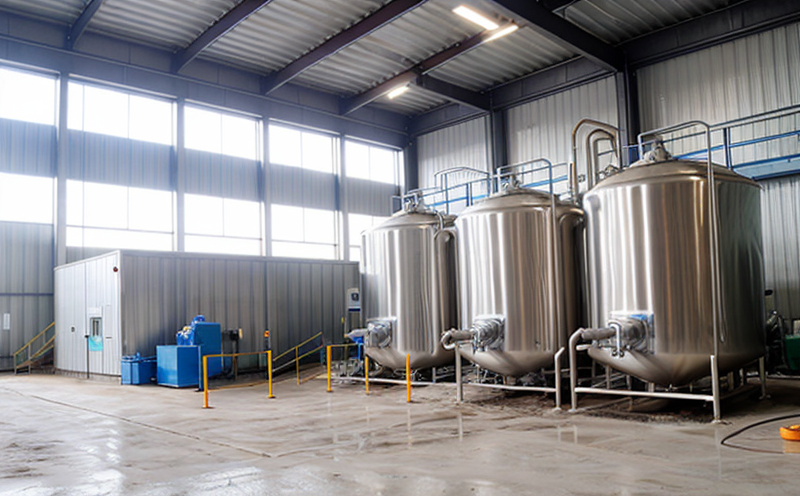APHA 5210B Biological Oxygen Demand Test in Process Water
The APHA 5210B test method is a critical analytical tool used to determine the amount of biodegradable organic matter present in process water. This test helps quality managers, compliance officers, and R&D engineers ensure that their industrial processes are not introducing excessive biological oxygen demand (BOD) into effluent streams.
The BOD test measures the amount of dissolved oxygen consumed by microorganisms as they degrade organic compounds over a specified period at a controlled temperature. The process water is inoculated with a standardized microbial population, and the sample is incubated for five days under conditions that favor biological activity. At this point, the difference in dissolved oxygen concentration between the original and final states of the sample provides a quantitative measure of biodegradable organic matter.
Understanding BOD levels is essential because high concentrations can lead to water quality issues such as increased nutrient loading, reduced dissolved oxygen availability for aquatic life, and potential regulatory non-compliance. For industrial processes that discharge into public waterways or local wastewater treatment facilities, accurate BOD testing ensures sustainable operations and environmental stewardship.
The APHA 5210B method is widely recognized in industries such as pulp and paper manufacturing, food processing, chemical production, and pharmaceuticals where organic pollutants are common. Compliance with standards like ISO 16034-2:2017 further emphasizes the importance of accurate BOD testing.
In addition to environmental concerns, monitoring BOD in process water also helps R&D engineers optimize treatment processes and reduce operational costs by identifying inefficiencies early on. This information can be used to refine pretreatment steps or improve wastewater recycling efforts within facilities.
During the testing procedure, samples are collected from various points along the production line, including raw materials intake, intermediate stages of processing, and final discharge locations. Each sample undergoes rigorous quality control measures before analysis begins. Proper specimen preparation involves dilution if necessary to ensure accurate readings, especially when dealing with highly concentrated organic solutions.
Modern laboratories employ advanced instrumentation such as automated titrators or oxygen sensors to perform the BOD test efficiently and accurately. These instruments provide precise measurements that contribute significantly to reliable data collection across multiple batches or runs of production cycles.
The results from APHA 5210B testing play a vital role in decision-making processes related to process optimization, emission control strategies, and overall plant performance evaluation. By providing actionable insights into biodegradable organic compounds present within the process water stream, this test supports sustainable industrial practices while adhering to regulatory requirements.
Compliance officers can leverage these results when preparing for audits or reporting to stakeholders about compliance status regarding environmental regulations like the Clean Water Act in North America or equivalent legislation globally. Additionally, by continuously monitoring BOD levels throughout different phases of production, companies demonstrate their commitment to responsible resource management and long-term sustainability goals.
Benefits
- Enhanced Compliance: Ensures adherence to environmental regulations by accurately measuring biodegradable organic matter in process water.
- Sustainable Operations: Identifies areas where improvements can be made to reduce the impact on local ecosystems and improve overall resource efficiency.
- Data-Driven Decisions: Provides valuable information for R&D teams to optimize treatment processes, enhance wastewater recycling initiatives, and minimize operational costs.
- Risk Management: Early detection of potential issues related to biodegradable organic compounds helps prevent costly disruptions or failures downstream in the supply chain.
Why Choose This Test
The APHA 5210B Biological Oxygen Demand test is chosen by industries seeking precise, reliable data on biodegradable organic matter content within their process water streams. Its standardized approach ensures consistent results across different facilities and batches, making it an essential tool for maintaining high standards of environmental responsibility.
By selecting this test method, organizations demonstrate their dedication to sustainable practices and regulatory compliance. The ability to measure BOD accurately allows companies to make informed decisions about process modifications that could lead to significant reductions in waste generation while improving overall efficiency.
The use of APHA 5210B also fosters transparency within supply chains by providing transparent data on water quality parameters, which can be shared with stakeholders. This level of accountability builds trust among customers, partners, and regulatory bodies alike.
Moreover, investing in BOD testing through the APHA 5210B method supports long-term strategic planning for industrial processes aimed at minimizing environmental impact while maximizing profitability. With increasingly stringent regulations on water quality standards, having robust monitoring systems like this one ensures that companies stay ahead of changing requirements and trends.
Use Cases and Application Examples
The APHA 5210B Biological Oxygen Demand test finds application in numerous industries where organic pollutants are present in process water. Here are some specific use cases:
- Pulp & Paper Industry: Monitoring BOD levels helps control the amount of biodegradable matter entering effluent streams, preventing excess nutrients from reaching natural water bodies.
- Food Processing Plants: Ensuring proper treatment of wastewater containing organic byproducts ensures compliance with local discharge limits and protects against potential contamination risks.
- Pharmaceutical Manufacturers: Regularly testing BOD can help identify any unexpected spikes in biodegradable compounds, which might indicate issues within production processes or raw material sourcing.
- Chemical Manufacturing: Implementing this test ensures that hazardous chemicals are appropriately neutralized before being released into the environment, reducing risks associated with chemical runoff.
In each of these cases, accurate BOD measurements through APHA 5210B serve as a crucial tool for maintaining regulatory compliance and promoting sustainable industrial practices. By integrating this test into routine quality assurance protocols, companies can effectively manage their environmental footprint while supporting broader sustainability goals.





